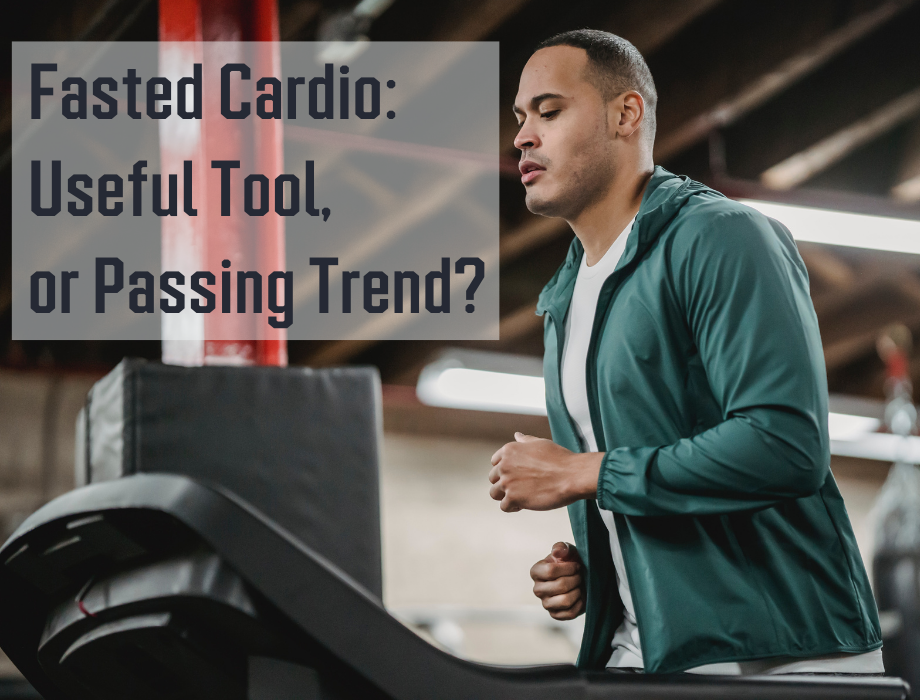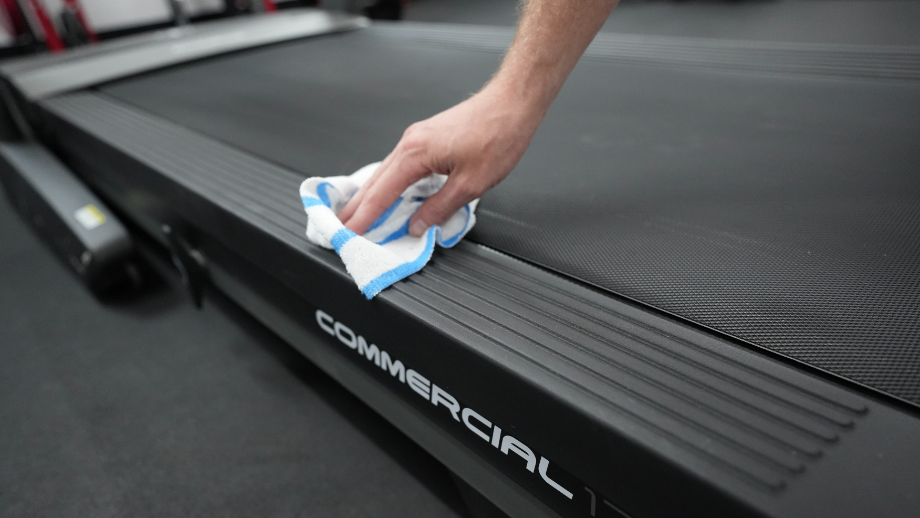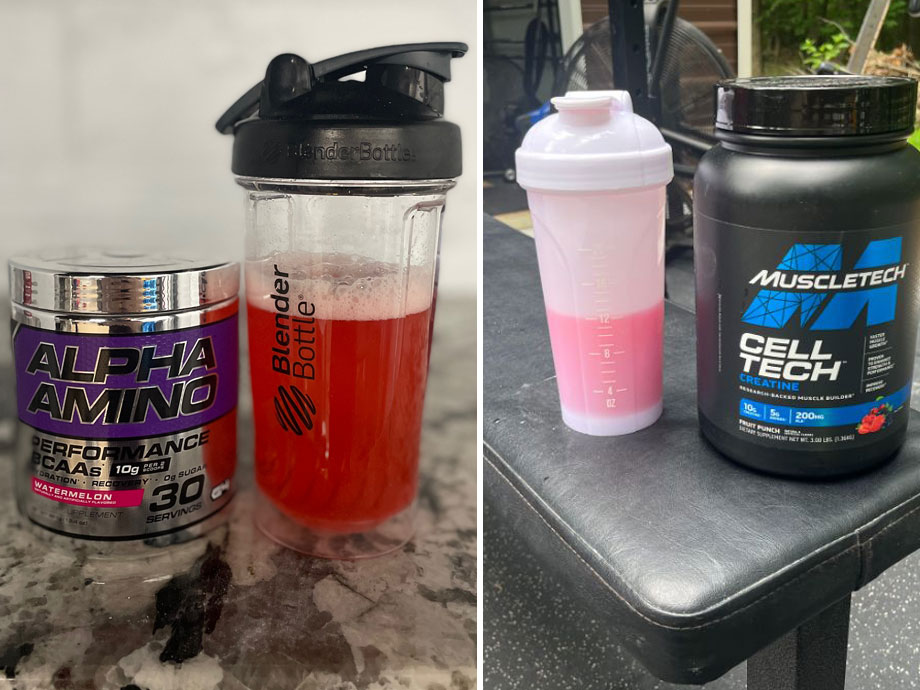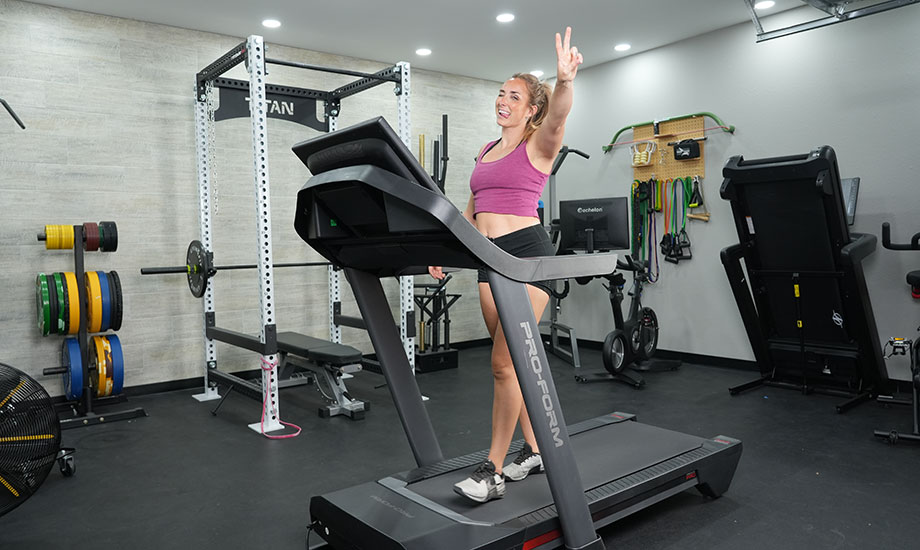“Fasted cardio.” It’s one of the latest trends in the fitness community. Maybe you’ve seen people post about it on TikTok, or maybe you’ve seen books claiming that this is the best way to lose weight/burn fat/get fit.
But is it?
Here, we will dig into fasted cardio: Should you do it? What should you know? We consulted with certified personal trainer, certified nutrition coach, and GGR staff writer Anthony O’Reilly for his expert take on this topic.
Medical disclaimer: This article is intended for educational and informational purposes only. It is not a substitute for health or medical advice. For medical advice, contact an appropriate healthcare provider.
What Is Fasted Cardio?
Understanding what fasted cardio is and if it could be beneficial for your workout—and your overall health—is important before attempting it.
Fasted cardio is the practice of exercising without eating anything prior to workout. This typically involves a low-intensity cardio workout such as jogging, rowing, using the elliptical, or biking, as opposed to heart-rate-pumping, high-intensity workouts.
According to Anthony, NASM-certified nutrition coach, “Fasted cardio refers to doing any type of cardio exercise on an empty stomach so that your body burns stored fat for energy rather than its preferred energy source, glucose (which we get from food). The idea is good in theory, but the truth behind this trendy weight loss trick is a little complicated.”
The idea is good in theory, but the truth behind this trendy weight loss trick is a little complicated.
Anthony O’Reilly, certified nutrition coach and personal trainer
You may have heard of intermittent fasting: the practice of having increased amounts of time between meals. There are many types of intermittent fasting, but the goal is to reach a fasted state where your body has used all of the energy from its glycogen stores so it begins to pull from the body’s fat stores, therefore, theoretically, increasing fat loss. This can be effective because weight loss is directly impacted by your total daily energy expenditure (TDEE).
As Anthony points out, “If weight loss is your goal, your TDEE needs to be higher than your daily caloric intake.” If you’re cutting meals out of your day with something like intermittent fasting, it’s easier to do this (again, in theory).
Thus, it follows that the goal behind a fasted workout is to pull energy from the fat stores in your body to increase fat burning. However, the fitness community and even scientists still question, “Is it effective? Is it healthy?”
Is Fasted Cardio Effective For Weight Loss?
The idea behind fasted cardio is to increase what is scientifically called “fat oxidation,” or, simply put, the breakdown of fat. Theoretically, this will lead to increased fat loss in the body in a shorter amount of time.
There has been a lot of discussion and many debates on whether or not working out in a fasted state is more beneficial for weight loss and caloric burn than working out after eating.
Take, for example, a Journal of the International Society of Sports Nutrition 2014 study. Two groups performed moderate-intensity cardiovascular exercise for four weeks. One group was in a fed state and the other in a fasted state. At the end of the study, both groups noted body composition changes and loss of fat mass with aerobic exercise and a hypocaloric (lower-calorie) diet, but those in a fasted state did not have a higher percentage of fat loss than the fed group.
In other words, fasted cardio appears to have no clear advantage regarding weight loss or body composition when compared to “fed cardio.”
Further, a 2016 review of 27 studies conducted on fasted cardio found that it helped people burn more calories during their workout, but that it had little-to-no impact on people’s total daily energy expenditure (TDEE), or the number of calories they burned in a day.
However, many researchers note in their work that more research should be done on this practice in order to definitively say whether or not fasted is more beneficial in this area than fed cardio. And you’ll probably find people who have anecdotal evidence that fasted cardio was the key to their weight loss.
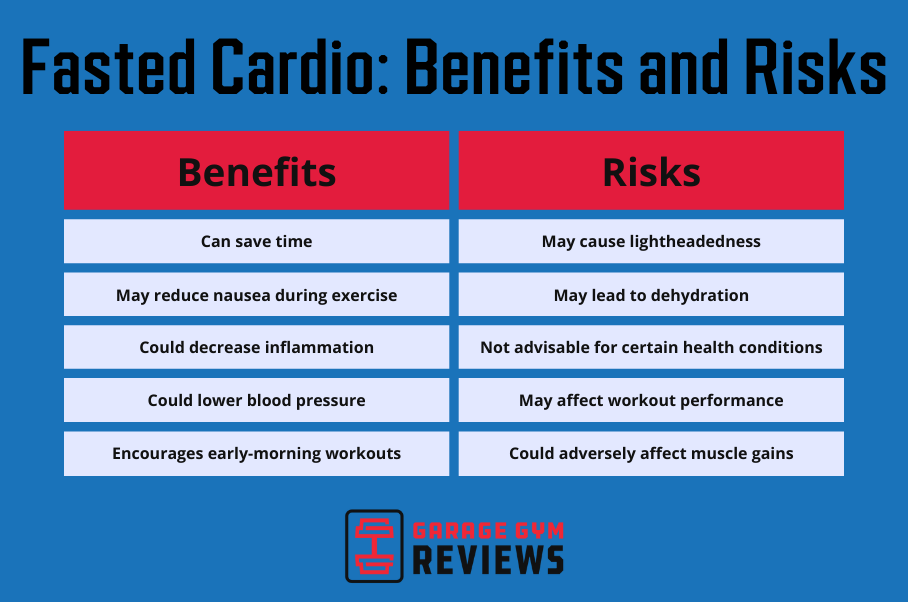
Know the Risks
With any change in diet, you should consider your personal health. If you want to give fasted cardio a try, you may want to initially consult your doctor or a registered dietitian.
Fasting is not for everyone, especially for those who are pregnant or anyone with serious health concerns, as it can affect blood sugar levels and cause dehydration. For example, in those with diabetes, fasted states could lead to dangerously low blood sugar and insulin levels that would compromise health.
Even outside of health conditions, if it has been a significant amount of time since your last meal, exercising can lead to lightheadedness, dizziness, and even fainting.
More than just health concerns, if your goal is better performance, fasting may not be right for you. According to Anthony, who is also a certified personal trainer, “Fasted cardio could negatively impact your performance if you plan to run or bike for 45 minutes or longer.”
If you are training for endurance, say a marathon or a triathlon, it may not be beneficial to exercise on an empty stomach.
And if muscle growth is your goal, you should know that according to one study, there is a link between extended workouts in a fasted state and the breakdown of protein that would cause a decrease in muscle mass and make it hard to build muscle.
Benefits of Fasted Cardio
“Just because the data on fasted cardio is fairly inconclusive, that doesn’t mean that there aren’t benefits,” Anthony states. “It’s great for people who are short on time, or just prefer training on an empty stomach.”
There are several other benefits, such as:
- Saves time
- Encourages early-morning workouts, which may increase energy and focus throughout the day
- Can help to decreases exercise-induced nausea
- May decrease inflammation in the body
- May help to decrease blood pressure
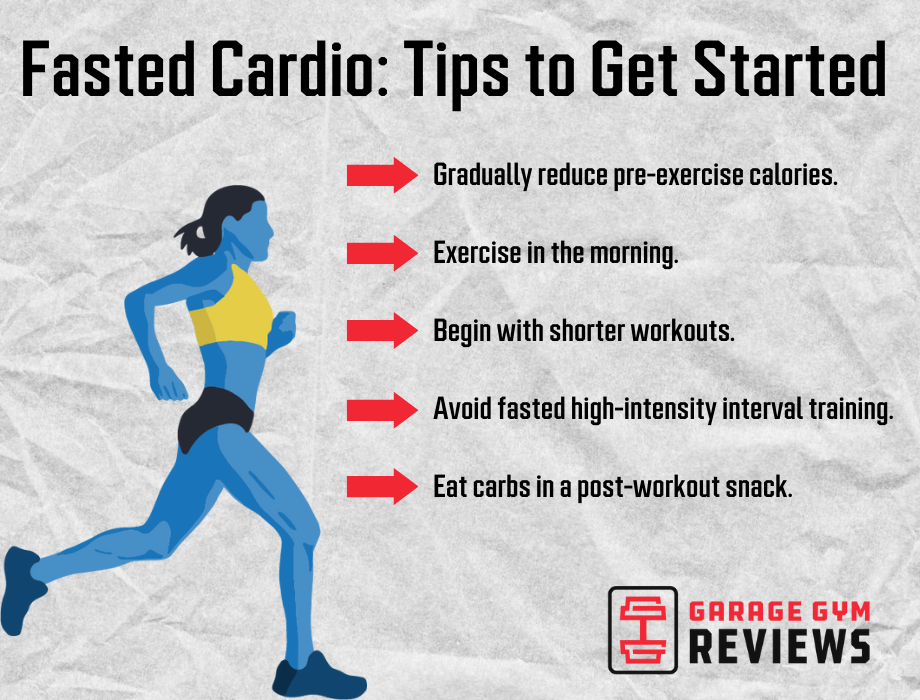
How to Do Fasted Cardio Safely
If you want to give fasted cardio a try, easing into it is the best approach. Here are some tips to follow, according to Anthony:
- Start by making sure you’re hydrated.
- Initially, try simply reducing the number of calories you consume two hours before exercising, such as going from a full meal to just a banana.
- If that is working for you, exercise in the morning after an overnight fast so you don’t have to go too long in the day without any food.
- Begin with small time intervals such as 10 to 15 minutes of a brisk walk or biking and see how your body feels.
- If you feel fine, gradually increase the exercise to 20 or 30 minutes.
- Avoid high-intensity interval training or workouts lasting more than an hour, as your performance may begin to decline.
- Make sure you get some carbs in a post-workout snack to fuel your body so you can keep going throughout the day.
Final Thoughts on Fasted Cardio
At the end of the day, fasted cardio is simply a fancy term for working out on an empty stomach. There are many diets that can steer a person to do fasted cardio, such as intermittent fasting, but what’s important is making sure that it’s right for you. There are some benefits such as saving time, preventing indigestion, and it may decrease exercise nausea, but there are also risks like fatigue, increased hunger, or weakness from not eating.
As far as being better for body fat loss, that is not yet proven, but fasted cardio can definitely play a role in general weight loss as long as you are consuming fewer calories than your total daily energy expenditure.
Fasted Cardio FAQs
How long should fasted cardio be?
Fasted cardio is the practice of working out without eating beforehand. The average length of an effective fasted workout is no longer than 45 minutes. The goal is to allow your body to pull energy from its fat stores instead of carbohydrates to increase fat loss.
Does fasted cardio actually work?
Fasted cardio is a hotly debated topic in the fitness community and has been studied time and time again throughout the years. The method is practiced in the fitness community and presents certain benefits; however, it has not been scientifically proven or guaranteed. Most studies seem to show no statistical difference over time between fasted and fed cardio.
Can fasted cardio burn more fat?
In some studies in athletes, fasted cardio has been shown to be effective. However, in general, the metabolic effects of fasted cardio are not proven. When considering fasted cardio, you should reflect on your lifestyle and health to see if it would be beneficial for you.
Is 20 minutes of fasted cardio enough?
Consider your overall goals and your body’s ability to work in a fasted state. Start small and build up time to reach your desired workout time. There is no set time as everyone is different and has a different pace. The main concern is not to workout in a fasted state longer than one hour.


